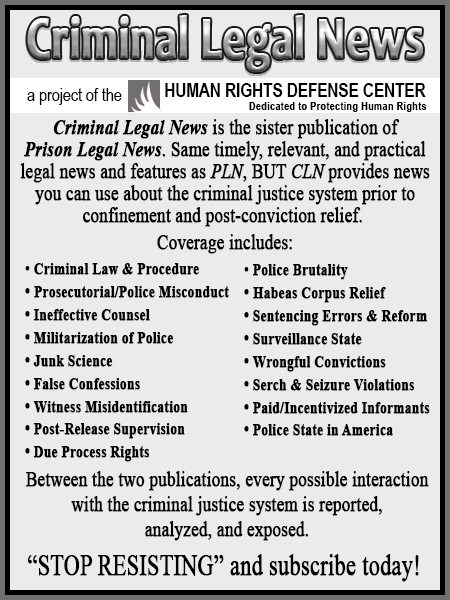Crime Scene Context: Bridging the Gap Between Evidence and Reconstruction
by Jo Ellen Nott
F.D. Zigan, a veteran crime scene investigator who specializes in fingerprint analysis for the Roswell Police Department in suburban Atlanta, Georgia, writes about the disconnect between evidence collection and scene reconstruction in Forensic Magazine, November 2023.
Zigan points out that in a world of specialization, a crucial element of crime scene investigation is being overlooked—the context in which impression evidence is found. The separation between evidence collection and scene reconstruction limits the possibilities of forensic analysis, affecting everything from witness statements to suspect interviews.
The disconnect is based on three problem areas, according to Zigan. The first is the separation of disciplines within crime scene investigations. Crime scene technicians collect evidence, latent fingerprint examiners analyze prints, and reconstructionists solve the puzzle by arranging the pieces into an understandable narrative. Often, crucial context is lost in this handover.
The forensic consulting and education group Bevel, Gardner and Associates advises, “Finding a fingerprint at the scene may be important, but of greater importance is the context in which we find the fingerprint.”
Zigan explains the separation of the disciplines by saying there are crime scene investigators who are trained to document and collect evidence only. Then, there are latent fingerprint examiners who receive fingerprint cards and macro photos of fingerprints whose sole job is to analyze and compare the two. Next, there are technicians who process evidence in the labs, and finally, there are crime scene reconstructionists who try to make sense out of everything that was collected and documented separately.
When asked why there is a disconnect between the crime scene investigator and the crime scene reconstructionist, certified Crime Scene Reconstructionist Zack Kowalske explained that the two jobs “have evolved with such depth in their respective fields that a loss of translation knowledge and context has occurred. The over specialization of these professionals can cause them to not see the fundamentals of the crime scene as a whole.”
The second problem in the disconnect is limited documentation. Impression evidence is documented differently than physical evidence, neglecting details like orientation and distortion that are vital for understanding its meaning.
In an example given by Zigan and supported by photographs in the article, he notes “a subject was accused of looking into car vehicle windows and attempting to pull on car door handles to see if they were unlocked. Instead of the crime scene investigator simply notating that a friction ridge pattern was located on the car window and classifying it as the hypothenar area, the description could be more involved and state that the impression was cupped which is consistent with a person trying to shield the glare on the window so they could see in the vehicle better.”
“There is also no real discernable lateral distortion (directional movement) which indicates that the hand was held relatively still. This is obviously not an accidental touch as some attorneys claim. An overall photograph of the friction ridge pattern would help the investigator put this into proper perspective as well. Taking only close ups of friction ridge evidence can be detrimental to the case if the investigator, attorneys, and juries can’t see its original location.” Understanding the distortion and how the impression evidence is oriented is crucial to either proving or disproving a statement given by a suspect, victim, or witness.
The third problem in the disconnect is a lack of shared knowledge. Crime scene investigators focus on collection, and reconstructionists lack a basic understanding of fingerprint patterns and distortion that affects their ability to interpret the crime scene dynamics.
The impact of the disconnect puts several obstacles in the way of solving a case. Evidence can be misinterpreted when there is not context and fingerprints and are merely seen as an identification tool. Using fingerprints for ID purposes only causes the reconstructionist to miss out on valuable insights into sequence of events and actions of the perpetrator.
Another obstacle is weakened case building. If the crime scene reconstruction is incomplete, it hinders the investigators’ ability to corroborate witness accounts, challenge suspect alibis, and build a strong case.
A final obstacle is missed opportunities on several levels. Overlooked contextual clues can lead to missed leads, inaccurate conclusions, and worst of all, potential injustice.
The author proposes several paths to bridge the disconnect between collecting impression evidence and reconstructing the crime scene: (1) increasing collaboration and cross-training between the different groups, (2) sharing knowledge and understanding each other’s roles in solving a crime, (3) standardizing the documentation of impression evidence to include detailed descriptions of orientation, distortion and environment, and (4) training investigators to recognize and document the potential meaning of distortion in fingerprint patterns.
By encouraging collaboration, improving documentation, and equipping investigators with necessary knowledge, Zigan says the full potential of forensic analysis is possible and will bring investigators closer to the truth, which is the goal in every case.
Sources: Bevel, Gardner and Associates, Forensic Magazine, LinkedIn David Zigan
As a digital subscriber to Criminal Legal News, you can access full text and downloads for this and other premium content.
Already a subscriber? Login





